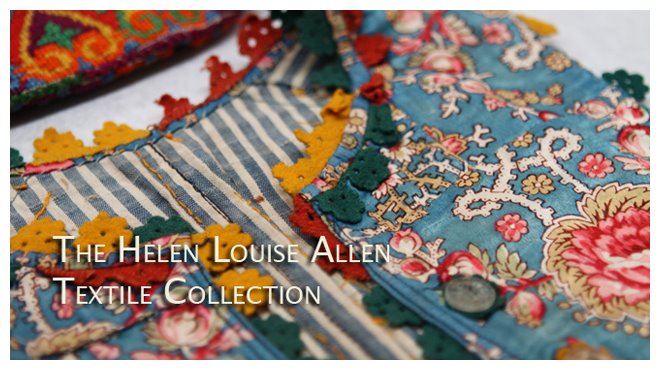 HLATC 2000.5.1
HLATC 2000.5.1This embroidered and fringed shawl,
HLATC 2000.5.1, has recently been quite a project for the packing team. Densely embroidered with traditional Chinese motifs, the shawl was produced in China for the western European market in the late 19th century. The photos below show you a bit of how exquisitely embroidered the off-white silk shawl is.


And...the project. The silk shawl is fringed on all sides and after bringing the piece out of storage we found that much of that fringe had gotten tangled on itself. What this piece needed was a little TLC and a fringe envelope. Tara, Maggie, Aurelia and Laura each chose a side, sat down at the table and painstakingly untangled the fringe. After untangling, the fringe was then placed into fringe "envelopes" made of archival tissue, to prevent this situation from happening in the future.



The next step of sandwiching the fringe between pieces of blueboard to help fold the piece into a box without disturbing the fringe was unfortunately not captured on camera. Rest assured though, it was a success.
You may notice in these photos that we are not wearing the white cotton gloves you usually see us wearing. Very infrequently we are faced with an incredibly tactile task, such as untangling a very fine fringe, which cannot physically be done with gloves on. In such situations, rather than risk further damage through rough handling, we may work without gloves. If we cannot wear gloves, we are washing our hands with soap and water very frequently to keep as much oil and dirt off of our fingertips as possible. It is definitely a compromise though because your skin is constantly producing oil and no amount of cleaning removes all oils from fingertips.




























